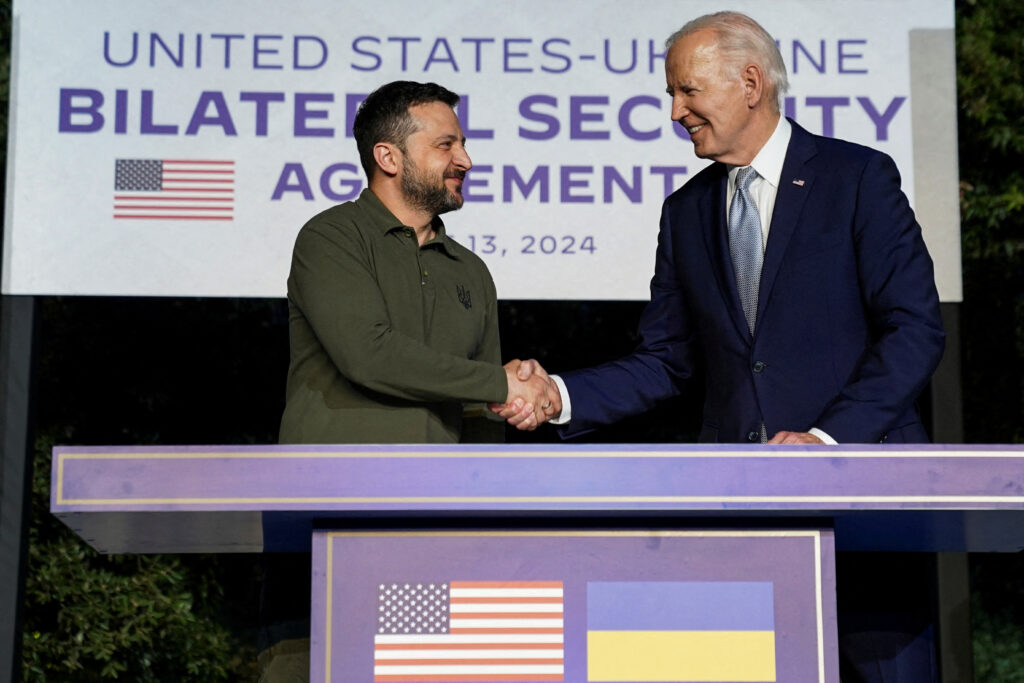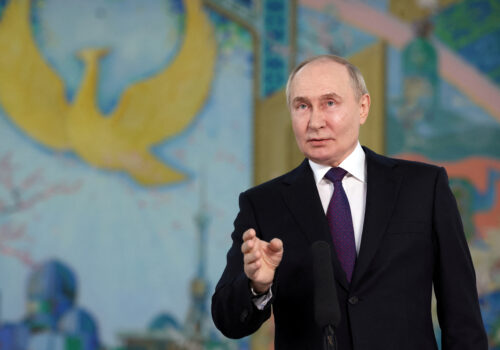
US signals long-term support for Ukraine with new security pact

The United States and Ukraine signed a bilateral security agreement on June 13 in a bid to underline Washington’s long-term support as Ukraine fights for national survival against Russia’s ongoing invasion. The agreement is the latest in a series of similar bilateral security pacts concluded by Kyiv since the start of 2024, but has attracted additional attention due to the critical role of US support for the Ukrainian war effort.
Since the onset of Russia’s full-scale invasion in February 2022, the United States has been the single biggest provider of military aid to Ukraine. Without US hardware, ammunition, training, and intelligence, Ukraine would not have been able to defend itself in a high intensity conventional war for so long. In other words, the US has emerged over the past two and a half years as an indispensable partner for Ukraine, both in terms of the country’s current military operations and long-term security.
The new US-Ukraine security agreement contains no major surprises. Rather than breaking new ground, it aims to establish a more long-term commitment to existing forms of military cooperation including training and weapons supplies, while also setting the stage for deepening partnership in defense production. “A lasting peace for Ukraine must be underwritten by Ukraine’s own ability to defend itself now, and to deter future aggression,” President Biden commented.
Stay updated
As the world watches the Russian invasion of Ukraine unfold, UkraineAlert delivers the best Atlantic Council expert insight and analysis on Ukraine twice a week directly to your inbox.
Crucially, the US-Ukraine bilateral security pact is not a formal treaty or military alliance and does not oblige the US to defend Ukraine. Instead, the terms of the agreement commit the United States to engage in high-level consultations with Ukraine within twenty-four hours of any future attacks on the country. This cautious approach is in line with well documented concerns within the Biden administration over the possibility of a direct clash between the US and Russia.
Critics claim the terms of the security agreement are deliberately broad and open to interpretation, reflecting what they see as Washington’s reluctance to provide Ukraine with anything approaching binding security guarantees. The absence of any official ratification procedures also leaves the ten-year agreement vulnerable to potential future changes in US foreign policy if Donald Trump wins the 2024 presidential election in November.
The Biden White House is not the first US administration to face claims of adopting an excessively cautious approach toward Russian aggression in Ukraine. Since the Russian invasion of Ukraine first began in 2014 with the seizure of Crimea, three successive US presidents have all been accused of failing to effectively deter the Kremlin.
Eurasia Center events

While welcomed by both sides, this latest security initiative is unlikely to convince Moscow of any fundamental change in the US stance or persuade Putin to end his invasion. It comes weeks after the end of a prolonged pause in US military aid to Ukraine caused by political deadlock in Congress over the passage of a sixty billion dollar support bill.
Ukrainian President Volodymyr Zelenskyy sought to put an optimistic spin on the signing of the new security agreement, hailing it as “historic” and saying the pact would serve as a bridge toward his country’s future NATO membership. Others have been less generous, noting that the absence of specific military commitments underlines the limitations of Western support for Ukraine.
Ukraine remains heavily dependent on continued Western military aid and is clearly in no position to demand greater commitment from the country’s Western partners. However, many Ukrainians believe the US and other Western nations have a vital self-interest in maintaining their support for the country.
Amid mounting frustration at the failure to offer Kyiv any fully-fledged military alliances, advocates of stronger support for Ukraine argue that the West’s unprecedented material and political investment since the outbreak of hostilities in 2022 means a Ukrainian defeat would represent a massive blow to Western prestige. It would therefore make more sense for the US and other partners to back Ukraine now, rather than face the far higher costs that would follow a Russian victory.
In a best case scenario, this new security agreement could create the conditions to anchor Ukraine firmly within the Western world, and could serve as a gateway to eventual Ukrainian NATO membership. However, without the requisite political will in Washington, the pact could come to be seen as the successor to the infamous 1994 Budapest Memorandum, which saw Ukraine unilaterally surrendering the world’s third-largest nuclear arsenal in exchange for security assurances that were exposed as worthless by Russia’s subsequent invasion.
A realistic appraisal of the recently signed US-Ukraine security pact is particularly important as both countries look to strengthen their partnership amid the largest European invasion since World War II. If Kyiv and Washington wish to convince Moscow to abandon its hopes of outlasting the West, they will need to match the sentiments expressed in the security agreement with concrete steps that will set the stage for Ukrainian victory.
Mykola Bielieskov is a research fellow at the National Institute for Strategic Studies and a senior analyst at Ukrainian NGO “Come Back Alive.” The views expressed in this article are the author’s personal position and do not reflect the opinions or views of NISS or Come Back Alive.
Further reading
The views expressed in UkraineAlert are solely those of the authors and do not necessarily reflect the views of the Atlantic Council, its staff, or its supporters.

The Eurasia Center’s mission is to enhance transatlantic cooperation in promoting stability, democratic values and prosperity in Eurasia, from Eastern Europe and Turkey in the West to the Caucasus, Russia and Central Asia in the East.
Follow us on social media
and support our work
Image: US President Joe Biden and Ukrainian President Volodymyr Zelenskyy shake hands on the day of signing a new security agreement between the United States and Ukraine, in Fasano, Italy, June 13, 2024. (REUTERS/Kevin Lamarque)




